
‘The Blue Trail’
Courtesy of KVIFF
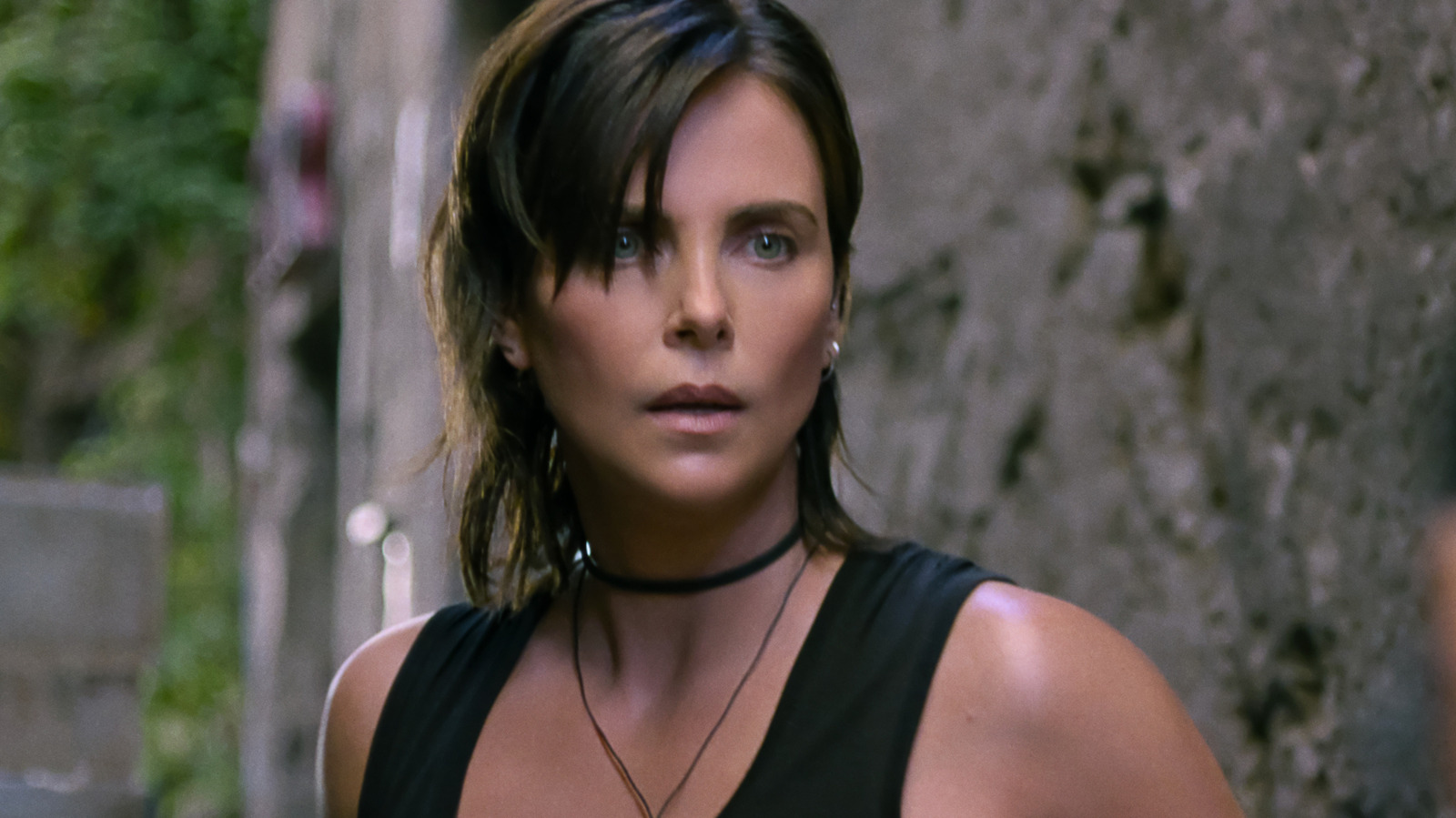
“The Old Guard” became a blueprint for the kind of mid-tier action movies that can thrive on Netflix. The Charlize Theron vehicle about immortal mercenaries with regenerative abilities took its sweet time getting a sequel, to the point that in July 2024, /Film conducted an investigation on whether “The Old Guard 2” was still happening. The answer to the question eventually turned out to be “yes,” and as “The Old Guard 2” trailer confirmed, the movie even pays off the original film’s most horrifying moment by exploring what five centuries of constantly drowning inside an iron maiden has done to Quynh (Ngô Thanh Vân). Spoiler: She’s not happy, and she has the first and most powerful immortal, Discord (Uma Thurman), in her corner.
The “Old Guard” film series has plenty of potential and could easily spawn another sequel or six. Unfortunately, critics haven’t been kind to “The Old Guard 2,” which is enough to make me wonder whether the series’ story might be over. Equally concerning are Theron’s comments from her interview with The Hollywood Reporter, in which she revealed that “The Old Guard 3” is far from a done deal:
“One thing I’ve learned in this business is that there are no guarantees, and it’s really gracious of [Netflix] to not have pushed us into another direction. This was always where we wanted to land the film, and it’s also very reminiscent of the first one. We never ended the first one thinking we were going to do a second, but that was just how it happened to be. So, we treated this one exactly the same, but I’m being completely honest when I say that we have absolutely no idea what that [third film] would even look like.”
While it’s understandable that Charlize Theron doesn’t have a clear idea of what the third movie will be like at a stage where “The Old Guard 2” is so fresh out of the oven, her confirmation that there are no concrete plans to follow up on the movie’s cliffhanger ending is somewhat frustrating. After all, “The Old Guard 2” wraps up with Quỳnh and Theron’s Andy making peace and teaming up against Discord, which all but confirms the plan is (or, at the least, was) to feature even more Theron vs. Thurman action in the future.
The climactic face-off between the “Mad Max: Fury Road” star’s Andy and the “Kill Bill” veteran’s Discord is the kind of thrilling battle between established action luminaries that you rarely see outside of the “Expendables” franchise, and I, for one, would definitely welcome a few more fight scenes between the two. Perhaps unsurprisingly, Theron enjoyed the opportunity to work with her colleague. As she told THR, she’s been looking for a project to make with Thurman for quite some time:
“I can’t tell you how many times we’ve developed something and I would throw her name out there. I’ve constantly tried to pull something together with us, and I’ve also had so many people around me whose opinions I really value, say, ‘You guys have to make a movie. People will absolutely love to see the two of you do action.’ Her action is so strong, and she’s really raised the bar. So, I felt like I had to really bring it. She was going to bring it, so I had to bring it.”
“The Old Guard 2” is now available for streaming on Netflix.
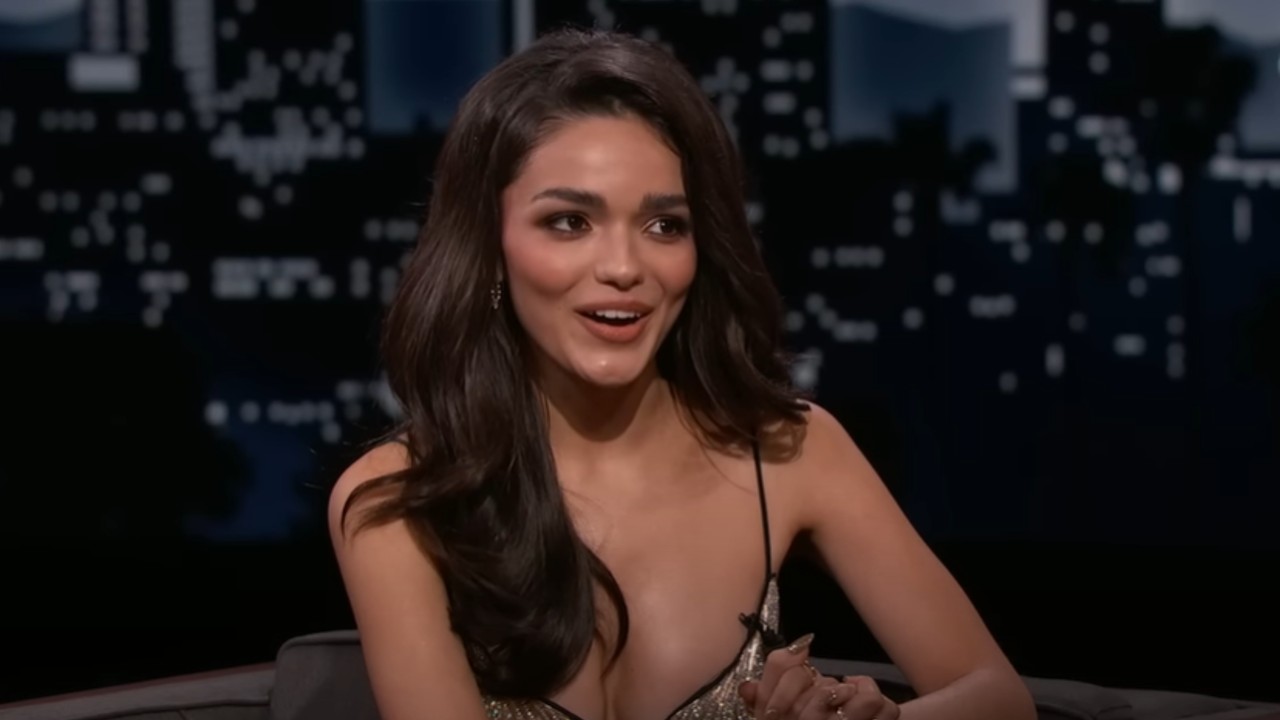
It’s summer, and for many of us our mood automatically becomes lighter as we imagine relaxed days and warm evenings by the pool/beach and think about vacations. While Rachel Zegler isn’t exactly in vacay mode right now, it’s clear that she has also lightened up and left Snow White’s bad press and box office failure from early in the 2025 movie schedule far in the past. She’s currently thriving in a West End production of Evita, and her latest ‘fit features a sheer mini-dress and fancy lavender lingerie.
Even though sheer styles are no longer relegated to summer, it’s certainly the time of year when they tend to become most popular. Lots of stars have been rocking the look lately, with Ines de Ramon wearing it for Brad Pitt’s F1 premiere, Alexandria Daddario going back to sheer after giving birth, and Kristen Stewart rocking a sheer skirt over shorts not long ago.
signed on for She Gets It From Me with Marisa Tomei) celebrated Evita’s opening with a cool look for the afterparty, which was shared on Instagram by her stylist. Take a look, and we can get into some specifics, below:
West Side Story star looks amazing, right?
Per the info relayed by the stylist, Zegler stepped out in a LaQuan Smith dress, which appears to be a mini version of his mockneck gown with sweeping dolman sleeves, which is currently sold out but cost $2,095. Meanwhile, the actress/singer paired it with lingerie by Araks which seem to be in a similar shade of luscious lavender. She looks to be sporting the Beatrice bralette ($135) and the Aaron panty ($95), and the combo does make a pretty, sexy outfit when assembled.
The actress has long been on point when it comes to her fashion game. From her early 2024 semi-sheer netted dress to her lovely hair ribbon and corset dress combo and lots of Snow White method dressing, she’s quickly become a young style star just as much as she’s a movie star who’s very much still on the rise.
Despite some hiccups earlier in the year, Zegler is kinda on a high right now. Not only is Snow White actually doing well on Disney+ after its lackluster performance in theaters, but her new stage production managed to rack up $9 million in just one week after starting previews, plus her Hollywood “dad” Pedro Pascal has been on hand to support her. The talent also made news recently for her funny reaction at hearing that Ralph Fiennes will portray Snow in the upcoming film, The Hunger Games: Sunrise on the Reaping. With everything that’s coming up for Zegler, we’re sure to see more stunning looks from her as the year goes on!

The Blue Trail, the latest movie from Brazilian filmmaker Gabriel Mascaro (Neon Bull, Divine Love, August Winds), takes viewers into a magical but also political Amazon in a near-future dystopia.
The film, which won the Silver Bear Grand Jury Prize at Berlin this year, is one of the highlights from the recent festival circuit that is screening in the Horizons program of the 59th edition of the Karlovy Vary International Film Festival (KVIFF), starting on Friday.
“In order for Brazil to develop economically, the country gives priority to its younger generations, while older people are put away in government colonies so they will not ‘get in the way,’” reads a synopsis. The 77-year-old Tereza, however, refuses and decides to escape.
That sets the stage for a movie that puts older women in the spotlight in ways rarely seen. Denise Weinberg stars as Tereza, along with Miriam Socarras and Rodrigo Santoro.
“What’s remarkable about The Blue Trail and makes it such a delight is that despite all the oppression in the air, it’s a movie filled with hope and faith in human resilience at any age,” THR‘s review highlighted.
THR asked Mascaro about his inspirations for The Blue Trail, what went into creating an autocratic state and its slogans, the movie’s religious and sexual undertones and what’s next for him.
Tell me a bit about why you set the film in a dystopian near-future Brazil? And how universal are the themes of the film in your view?
In every family, we have an aging relative, so it has been very special to see the film resonate so strongly at all the festivals where it has screened. There are very few films with elderly protagonists. The movies we see in general often focus on older characters left behind in a world that is moving on without them, portraying aging as a period of painful isolation or physical decline. In many cases, the past becomes a driving force in these stories, motivating the protagonist to seek a final purpose, perhaps to allow them to die in peace. These stories often carry an undercurrent of nostalgia and inevitability, where death unconsciously shapes the narrative’s tension.
Growing up, I lived in a house with many people, and my grandparents were always in my life. My grandmother learned to paint at 80 years old, after my grandfather’s death, and seeing things like this changed my perspective on aging. It showed me how the elderly can become protagonists of their own self-discovery and make significant changes, even impressive or astonishing ones.
In my film, I wanted to explore a different perspective. My approach proposes a journey, with elements of adventure and fantasy, and reconnecting with one’s desire to be free. It’s a “boat movie” about aging and dreaming, with older women taking center stage. The Blue Trail is a film about the right to dream, featuring an older protagonist who decides not to accept the fate that someone else, in this case, the state, has traced for her. I wanted to make a film that serves as an ode to freedom, showcasing a rebellious septuagenarian, dealing with her imminent seclusion in a senior colony, and signaling it is never too late to find new meaning in life.
How close do you feel we are to this social and political future, given all the things going on in Brazil and the world?
I think the strength of the film is in capturing an imaginary [world] — how the elderly are framed within a society governed by the logic of productivity. And this society with these values is one we are already living in today. I just created a light distortion of reality through a playful allegory. More than anticipating the future, what’s unusual about the film is the feeling that everything we see in it could already be real.
This film is set in a society obsessed with productivity, where older citizens are invited to exile themselves from the rest of the community upon reaching a certain age. I see it as a near-dystopian, yet simultaneously inspiring, fable about Tereza, a 77-year-old woman whose time to “go away” has just arrived. Refusing to accept this “social euthanasia,” Tereza embarks on a journey in search of freedom and a long-held dream. Her journey truly begins when she runs away on a boat that will take her deep into the Amazon, and deep into her own soul.
I found the slogan “The future is for everyone” that the state in the film uses quite scary. What was your thinking behind that?
I wanted to build a state that, instead of a caricature of a villain, has an “elegant” way of trying to sell the idea that it is doing something noble. I chose to create a cunning autocratic state that profanes euphemism and publicly celebrates the elderly while simultaneously alienating their bodies.
Why did you want to address aging, especially aging with dignity and as a woman in an economy-focused society, as well as freedom, as themes now?
I think The Blue Trail indirectly addresses a lot of serious and delicate contemporary issues, especially related to the forced displacement of people, groups, or ethnicities from their homes in the name of a state project. It’s about the elderly being removed from society, but it also resonates with so many other groups of people. From gentrification, to the removal of indigenous communities from their lands for economic exploitation, to wars waged for territorial gain while wealthy countries profit from arms sales, the treatment of refugees and immigrants forced to leave their countries due to conflicts or oppression. Above all, I wanted to make a film that was passionate about the presence and the possibilities of our drive for life. A film about the character of a woman — a mother, grandmother, older, yet still not confined to a fixed identity. Tereza embodies the desire to live out this journey, the willingness to try on new identities and experience new things in a unique, original, and undogmatic way.
I find that it is unusual to see elderly protagonists in cinema, especially in dystopias, fantasies and also in anything resembling a “coming-of-age” drama. Genre conventions in cinema are powerful tools for storytelling, but they can be oppressive to storytellers as well. It often seems as though rebellion against the system is something reserved for the young. Like the quest for maturity, understanding and finding your place in the world, should be rites of passage meant only for high school students or people not much older.

‘The Blue Trail’
Courtesy of KVIFF
I hope it is a film that plays with genres in a fun way. Instead of adhering to a single genre, I wanted to create an interaction between the lyrical and the playful in a sort of post-tropical delirium that challenges some of these rigid lines.
How important are religious and sexual undertones for you in general and particularly this film and why?
More than talking about “futurism,” when we speak of dystopia, my interest lies in imagining and speculating about changes in behavior. So naturally, themes like desire, eroticism and religion emerge as tools to think about the tensions of my characters within the film’s world.
There doesn’t need to be a flying car on screen to create a displacement of space and time. Cultural or behavioral changes can signal a dystopia even more radically than a technology or a gadget. The challenge here was to think about a hypothetical world unique and singular to the world of the film – neither past, present nor future.
In The Blue Trail, the protagonist begins the film as a conservative, pro-system, averse to the idea of hallucinogens, but gradually changes how she perceives and feels the world. It was important for me to create the arc of an elderly woman who discovers the taste of freedom throughout her journey in the film. Deep down, she just wanted to take a plane ride, but ends up learning to fly much higher than she ever imagined possible.
Can you share some of your influences in cinema and in terms of directors? I got magic realism vibes, among others…
I think Chris Marker (La Jetée) showed me how it’s possible to fabricate worlds and shift realities without needing big devices. I learned from Claire Denis (Beau Travail) how to look at bodies. Jia Zhangke (A Touch of Sin) resonates in my work as a filmmaker who pays attention to space and landscape transformation. My research blends references but also different genres.
Playfully engaging with genre is an important part of my work, exploring possible cracks, and the potential they reveal, within the narrative tradition. I have a special affection for cinema that makes speculations of reality from fantastical notions, but that could still be real.
How did you come up with the funny but at the same time scary word “wrinkle wagon” that we hear in the film?
I did iconographic research on vehicles used to collect stray dogs. These vehicles marked the imagination of generations. So I tried to reframe this idea into a vehicle dedicated to collecting dissident elderly people on the streets. People popularly call the vehicle the “wrinkle wagon,” although its official name is “Citizen Police.” Having an alternative nickname adds a special flavor to the world-building, giving the film additional layers.

‘The Blue Trail’
Courtesy of KVIFF
I told someone that I just saw a movie about an older woman who goes on an epic journey in a country focused on economic growth.” His reaction was: “Which country?!” When I said Brazil, he seemed surprised…
It’s curious that the Amazon, as consumed in cinema and TV outside of Brazil, is still so idealized. I wanted to challenge this romanticized, skewed representation we often see when it’s about conservation. The film takes us into an Amazon that is simultaneously magical and industrial, almost surreal, and deeply political.
The story speculates about a political system marked by tropical populist, developmental fascism, placing the Amazon not in the idealized space of “the lungs of the world,” but as the region at the heart of the planet’s contradictions. I see the Amazon as a character with its own life, laden with its own complexities.
I faced the challenge of redefining the idealization of Amazonian fauna. Thus, the viewer will be confronted with an unusual industrial-scale meat-processing factory for alligator meat and a betting house featuring fish fighting rings. The premise was to accentuate how large-scale capital and pop culture have appropriated the imagery of the region where the film is set.
The film also dedicates a special place to an enchanted snail that emits a blue slime with magical powers to open paths and see the future. The snail signals a poetic contradiction that can be associated with old age as well: slow in movement but infinite in possibilities. The blue slime snail leaves a blue trail wherever it goes, as if planting a seed for a new future.
What’s next for you? Any new projects?
I’m beginning to develop some new ideas while also staying open to falling in love with a screenplay that someone who admires my work might bring to me.
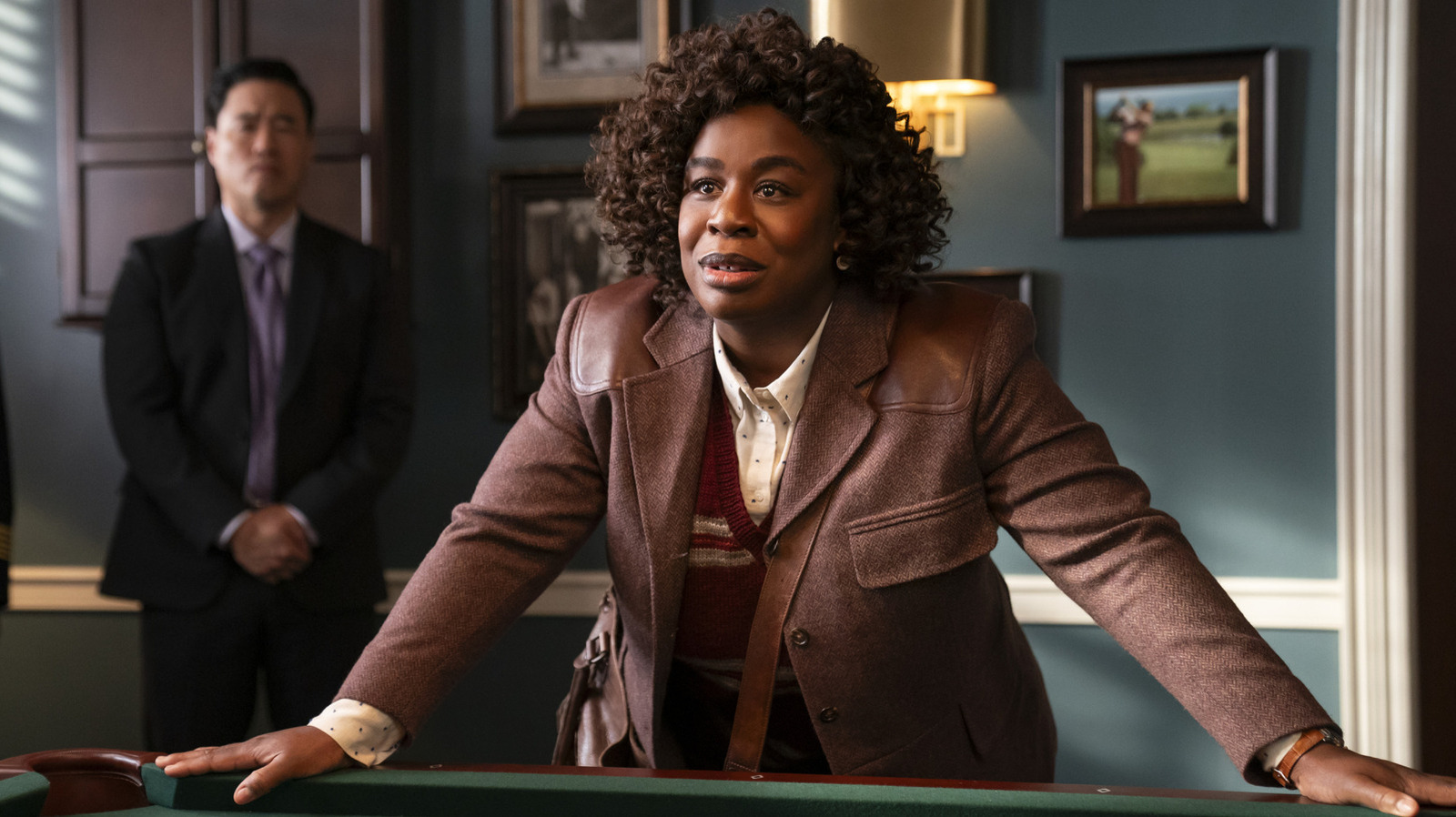
Netflix’s “The Residence” differentiates itself from other political shows by focusing its murder mystery on the lower rungs of the White House staff. Though the President of the United States (Paul Fitzgerald) and other major players very much appear on the show, its investigation centers around the White House’s Chief Usher Wynter (Giancarlo Esposito). Similarly, Uzo Aduba’s Detective Cordelia Cupp generally deals with folks like FBI Special Agent Edwin Park (Randall Park), Wynter’s assistant Jasmine Haney (Susan Kelechi Watson), White House Executive Pastry Chef Didier Gotthard (Bronson Pinchot), and Executive Chef Marvella (Mary Wiseman).
Along with a generous splash of comedy and Cupp’s eccentric fixation on birds, this approach makes “The Residence” unique among the many shows Netflix has to offer … or perhaps made is the more accurate tense. Per information obtained by Deadline, “The Residence” has been canceled despite the murder mystery’s chart-busting showing and critical appreciation. Two specific things worked against “The Residence:” Not only was the show costly to make thanks to its massive seven-stage White House set and huge cast full of major names, but Netflix also released the series on March 20, 2025. At that point, the streamer’s unnerving crime drama “Adolescence” was still the talk of the proverbial town, which robbed “The Residence” of the cultural spotlight it might have otherwise received.
Streaming services are infamous for canceling shows early, and Netflix is easily the best-known offender when it comes to nipping interesting new series in the bud. As “The Residence” demonstrates, even critical success and good numbers don’t necessarily guarantee survival in the dog-eat-dog world of streaming — and if you look at the platform’s past, this isn’t even the first time a Netflix show has received an abrupt end just because it happened to be on the expensive side and ended up running against another, more successful series.
In fact, these exact circumstances have happened before. Netflix notoriously canceled its sci-fi mystery series “1899” after just one season due to production and budget concerns. Much like “The Residence,” that show also had the misfortune of debuting concurrently with a more popular series. In that case, “1899” was up against “Wednesday,” which went on to hog all the available space in the pop culture zeitgeist. Since both “The Residence” and “1899” were good shows that had potential for even greater things, their cancellations were no doubt a massive blow to the fans. Time will tell whether such blows make viewers ever so slightly more wary of investing their time in checking out promising new Netflix series in the future.
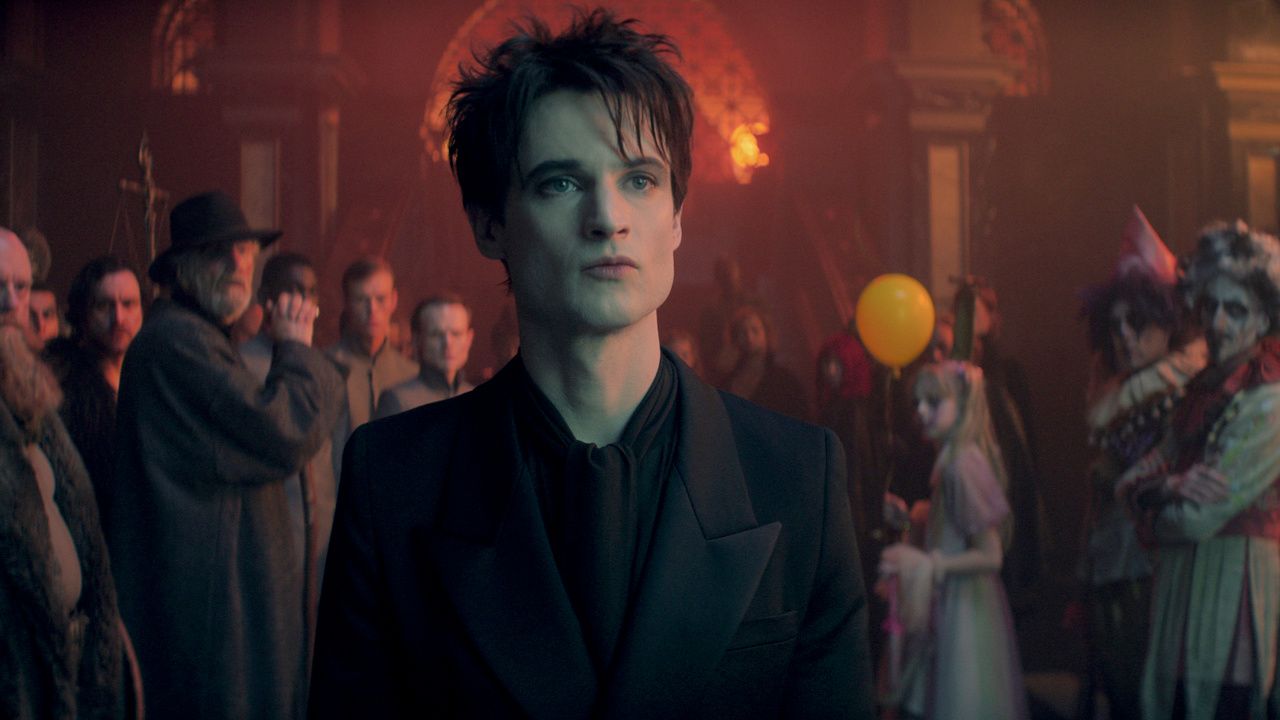
Tom Sturridge as Dream in episode 203 of ‘The Sandman.’ Photo: Netflix © 2025.
‘The Sandman’ Season 2 Volume 1 receives 7 out of 10 stars.
Released on Netflix on July 3rd, ‘The Sandman’ returns with the first batch of episodes from its second season, focusing once again on the machinations of stoic, powerful mythological figure Dream (Tom Sturridge, ‘On the Road’).
Overseen by showrunner and executive producer Allan Heinberg (‘Wonder Woman’) the cast for the new season also includes Kirby (‘The Good Place’), Mason Alexander Park (‘National Anthem’), Esmé Creed-Miles (‘Hanna’) and Adrian Lester (‘Mary, Queen of Scots’).
Related Article: Steve Coogan, Douglas Booth and More Added to ‘The Sandman’ Season 2

Kirby as Death in episode 205 of ‘The Sandman.’ Photo: Ed Miller/Netflix © 2025.
It is almost impossible to discuss this new season of ‘The Sandman’ without addressing the Neil Gaiman elephant in the room. The original creator and writer of the classic graphic novel series from where the Netflix show draws its source material is facing some serious misconduct allegations, and that goes some way to explain why his presence has been all but vanished in the promotion for the second season.
All of which is to say that we’re in a case of separating the art from the artist, and not dismissing the hard work that the creative team, crew and cast have put into the new show. ‘Sandman’ is a show that fans have been eagerly awaiting, and while it’s somewhat frustrating that Netflix has opted to dole it out in chunks (much as with ‘Stranger Things’ or ‘Cobra Kai’), this first “Volume” represents a satisfying story.

Mason Alexander Park as Desire in episode 205 of ‘The Sandman.’ Photo: Ed Miller/Netflix © 2025.
The writers’ room, overseen by showrunner Allan Heinberg, is here adapting more of the beloved ‘Sandman’ stories, albeit with their own twist.
We get to meet more members of the Endless family, including Destiny and Destruction (AKA “The Prodigal”) who all have their own ways of dealing with being anthropomorphic representations of abstract ideas.
There is also pleasure to be found in the choices of stories this time around –– the likes of Thor, Loki and other Norse gods appear, as do Oberon and Titania, summoned to watch a production of the Shakespeare play in which they feature.
This season features even more of a narrative drive than the first, tying together the various narratives in interesting, thoughtful fashion.
Director Jamie Childs handled three episodes of Season 1 and returns to take over all of the second, bringing the same stylish visions to life.
While there are moments that the effects don’t always quite live up to the imagination of the team, the show in general is still impressive.

Tom Sturridge as Dream in episode 205 of ‘The Sandman.’ Photo: Netflix © 2025.
Tom Sturridge remains the focal point of the show even the story sometimes wanders off without him. His Dream is a stoic, haunted character, and while he’s not always the most charismatic (by design), he’s still compelling.
Around him, the other members of the Endless “family” have their own appeal, especially Mason Alexander Park as the preening, selfish Desire and Esmé Creed-Miles as the whimsical, sometimes psychotic Delirium.
When the Endless are assembled, it’s always more entertaining watching their familiar dynamic –– my only problem? Needed more Death, since Kirby is the best of the bunch (and we’re promised an adaptation of one of the character’s best storylines, ‘Death: The High Cost of Living’ as a standalone episode later in the season).
Elsewhere, new characters that make an impact include Dream’s son, Orpheus (Ruairi O’Connor), who plays an important part later in the season, and Ann Skelly, who impresses as Nuala, a member of Oberon and Titania’s royal court, who ends up making a big change in her life.

Ann Skelly as Nuala in episode 203 of ‘The Sandman.’ Photo: Ed Miller/Netflix © 2025.
There is also a welcome return for some of the supporting characters from Season 1, including Merv Pumpkinhead (voiced by Mark Hamill), Matthew the Raven (with the vocal tones of Patton Oswalt), and Vivienne Acheampong as Lucienne, the librarian who serves as Dream’s main assistant. Plus Hob Gadling, granted immortality, and who meets Dream every hundred years or so, has a solid scene early in the new season, with Ferdinand Kingsley bringing him to cocky, funny life.

Barry Sloane as Destruction in episode 206 of ‘The Sandman.’ Photo: Ed Miller/Netflix © 2025.
Since this and Volume 2 (due on July 24th) represent the last ‘Sandman’ output we’ll be seeing for the foreseeable future, it’s at least reassuring that these are effective, well-crafted takes on the stories.
Is it a perfect version? No, but it has enough verve and magic about to cast a spell.
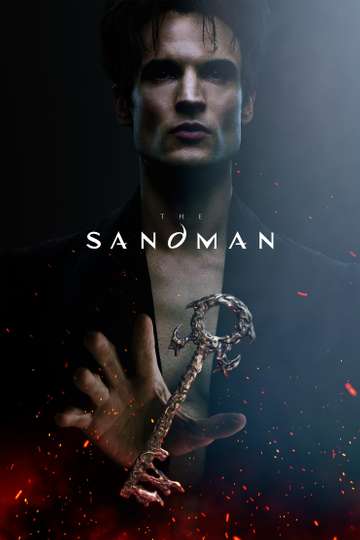
“Dream the world anew.”
After a fateful reunion with his family, Dream of the Endless (Tom Sturridge) must face one impossible decision after another as he attempts to save himself, his kingdom, and the waking world from the epic fallout of his past misdeeds.
To make amends, Dream must confront longtime friends and foes, gods, monsters, and mortals. But the path to forgiveness is full of unexpected twists and turns, and true absolution may cost Dream everything.

Jenna Coleman as Lady Johanna in episode 206 of ‘The Sandman.’ Photo: Ed Miller/Netflix © 2025.
Buy Vertigo Comics Movies and TV on Amazon
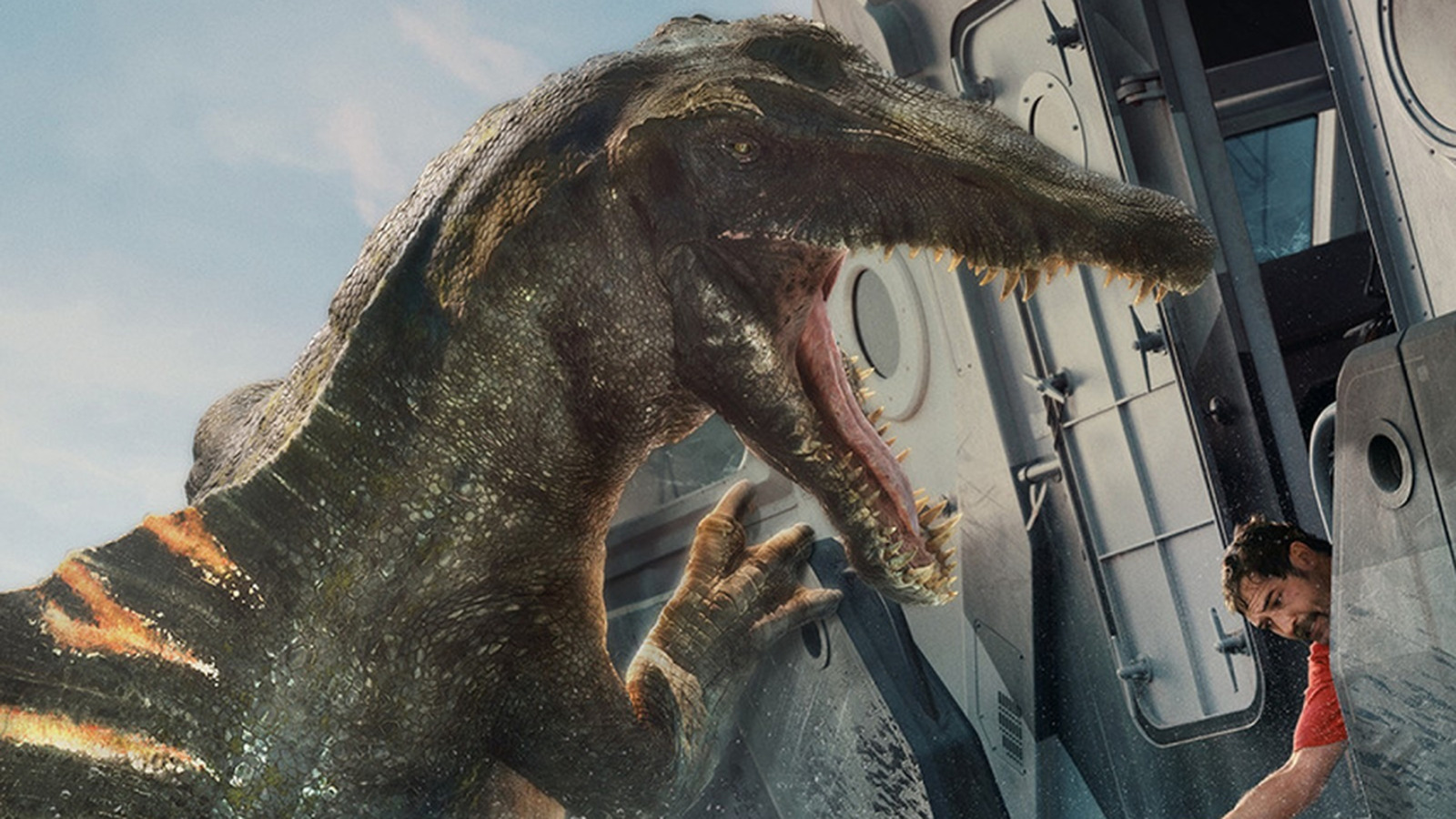
“Jurassic Park” is known for pioneering CGI in filmmaking, but it didn’t rely entirely on computer-generated dinosaurs — the key was its blend of CGI with impressive, practical animatronic dinosaurs which helped the whole thing feel tangible. It’s in that area that the latest entry in the franchise, “Jurassic World Rebirth,” is sorely lacking.
Directed by Gareth Edwards (“Godzilla,” “Rogue One”), the new film is set five years after the events of “Jurassic World Dominion.” The planet’s ecology is largely inhospitable for dinosaurs, and the majority that remain now exist in isolated environments near the equator, far removed from humanity. A team is sent to Ile Saint-Hubert, a former research facility used by Jurassic World scientists, to collect dino DNA that holds the key to a drug that could bring miraculous life-saving benefits.
The film is overflowing with dinosaurs, including some new ones, such as the mutant D-rex. The problem? Every single one of them was created through CGI. There’s not a single practical dinosaur puppet in sight, and no animatronics to speak of. While some of the CGI is admittedly impressive, the lack of those practical dinos is noticeable.
“Dominion,” for all of its faults, had quite a few puppeted dinosaurs in the final film. Some of those animatronics were rather impressive, including in several shots of the Giganotosaurus. Those moments almost make the ride worth it. (Almost — there are many amongst us who still aren’t ready to forgive the whole “giant locusts” thing.)
Even though the films absolutely relied more heavily on CGI, all of the previous entries in the “Jurassic World” era included animatronic dinosaurs. At one point, producer Frank Marshall boasted that “Fallen Kingdom” had more animatronics than any of the other sequels. Again, one is entitled to their own opinion on these films, but it’s fair to say that the presence of those practical animals was welcome.
So why did “Rebirth” skimp on practical effects as it relates to the dinosaurs? /Film’s Jeremy Mathai spoke with Gareth Edwards and asked him about that very thing, with the filmmaker offering the following explanation:
“My background was computer graphics, visual effects. The thing you learn the hard way, I guess, on some of these movies is you go to a lot of trouble doing something practical and sometimes you end up replacing it in the computer. It can be really worth it, because it was a great reference, it gave the actor something to react to on set, and it can all be great. But we had a year and a quarter, and so it felt like we didn’t have time to do pre-vis, all that animation that people do before with the stunt sequences and set pieces. It also felt like animatronics — like big, cool, crazy animatronics — were not going to happen in time and all would’ve been a lot of resources and time and we could probably [not] have got through this one with just puppets and stuff.”
Edwards made great use of CGI to create the various kaiju in 2014’s “Godzilla.” He also used CGI to make his feature directorial debut, “Monsters,” feel cinematic on the cheap, and of course he directed “Rogue One: A Star Wars Story,” which used a brilliant combination of practical effects and CGI, making for a much better final product. That unfortunately wasn’t the case with his entry in the “Jurassic” saga.
As for the director’s explanation? There’s a lot to examine there. I’m not a filmmaker, so I can’t speak to how often practical effects don’t work out. What I do know for sure is that this movie seemed to come together very quickly. It wasn’t even announced that “Jurassic Park” screenwriter David Koepp was coming back to pen this movie until January 2024. An 18-month turnaround time for a blockbuster of this size is very short.
More than anything, it seems like that time crunch prevented Edwards and the rest of the filmmakers from being able to rely on animatronics. These things take lots of time to build, and they can be tricky. The T-rex in “Jurassic Park” famously kept breaking because of the rain during its most important scene. Spielberg had to work around that, but the end result is perhaps one of the most thrilling scenes in the history of popular cinema.
Alas, Universal wanted this movie to happen quickly in order to meet this summer 2025 release date. That’s the nature of the business sometimes — it’s just as much about commerce as it is about the art of filmmaking. In this case, Edwards and his team had to do what made sense on a shorter timeline and that meant relying much more on CGI. The Spinosaurus from “Jurassic Park III” may be one of the greatest animatronics in the history of the series, but here? The Spinos are all CGI creatures, and one would be hard-pressed to say they look as good.
Unfortunately, that’s something the audience can feel. Just to put my cards on the table, I did like “Rebirth” a whole lot more than “Fallen Kingdom” or “Dominion,” but by far the best moments in those movies involve practical creature effects. Granted, practical puppets alone can’t fully redeem a movie, but one can’t help but wonder how much this movie might have benefited from some of those practical touches that improved every other film in the history of this franchise.
“Jurassic World Rebirth” is in theaters now.